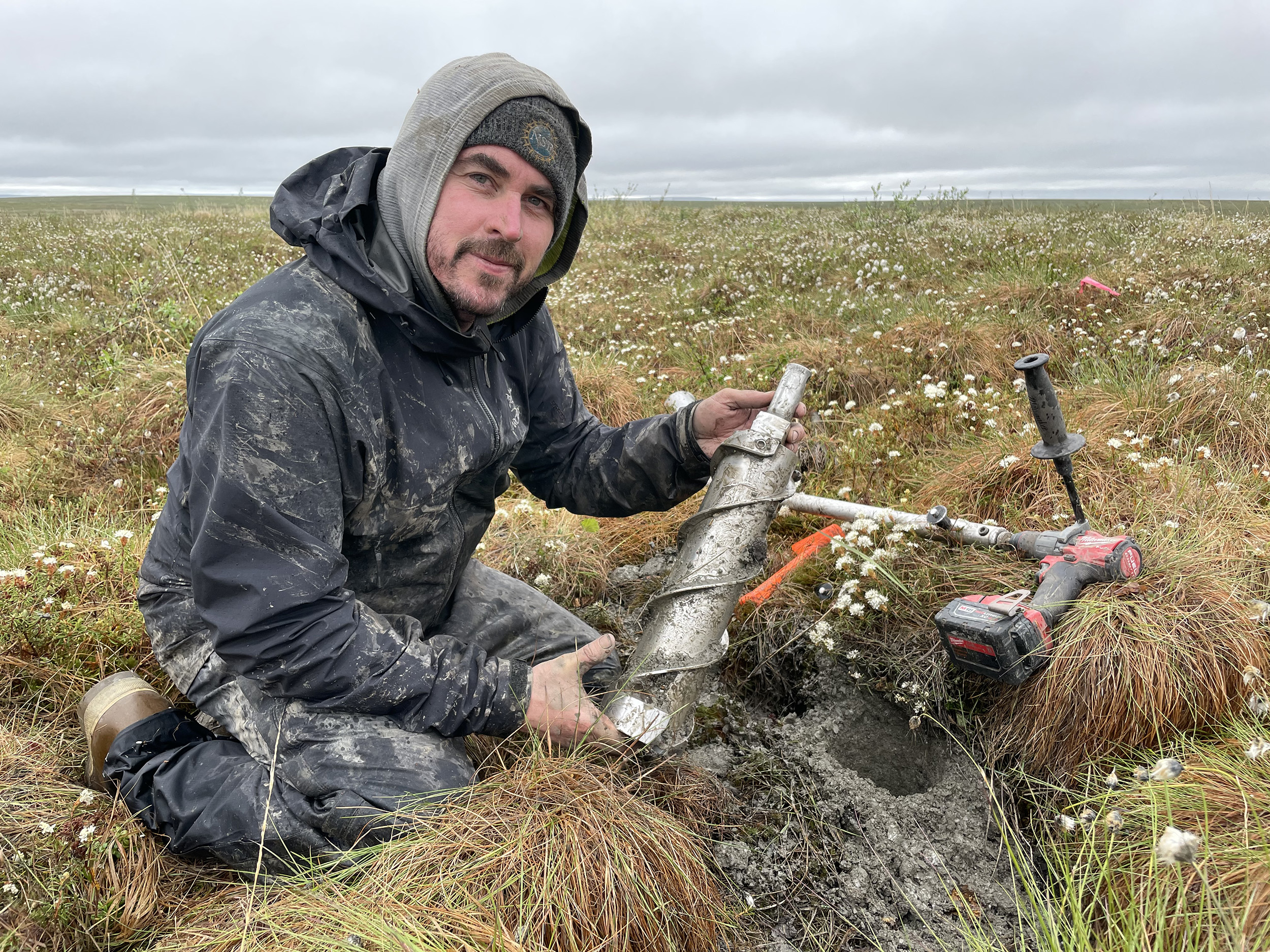Cold-region permafrost bounces back from wildfire

Benjamin Jones displays a piece of drilling equipment while taking a core sample at an Anaktuvuk River Fire site.
Jeff Richardson
907-474-6284
Aug. 13, 2021
University of Alaska Fairbanks scientists are presenting their work at the American Geophysical Union’s fall meeting in New Orleans this week. This article is part of a series highlighting UAF research from the world’s largest Earth and space science meeting.
In 2007, a shocking event happened on Alaska’s North Slope. During an abnormally dry summer, a raging wildfire burned for three months and claimed a vast stretch of tundra.
The Anaktuvuk River Fire scorched about 1,000 square kilometers, an unprecedented blaze for the normally wet, cool terrain. It also provided a rare opportunity for study.
Benjamin Jones, a research professor at the University of Alaska Fairbanks Institute of Northern Engineering, has collected data from the wildfire site since 2009. The ground below is carbon-storing permafrost, which doesn’t emit greenhouse gases like methane as long as it remains frozen.
“We wanted to bring together various data sets to understand the whole picture of what’s going on after a northern tundra fire,” Jones said.
For more than a decade, Jones has measured subsurface temperatures, taken core samples and analyzed ice composition to see how permafrost has responded. The frozen ground has proven to be surprisingly resilient.
Because the blackened surface absorbed more heat from sunlight, the subsurface temperatures gradually rose about 2 degrees C, peaking in 2015. But today, with a new cover of grasses and shrubs, ground temperatures in the fire area are just 0.2 degrees warmer during the summer than in areas that didn’t burn.
It’s an indicator that cold-region permafrost, such as that found on the North Slope, can bounce back from a major event like a wildfire.
“This is a natural laboratory on the effects of fire behavior,” Jones said. “Our main surprise is how quickly that area was able to stabilize.”


